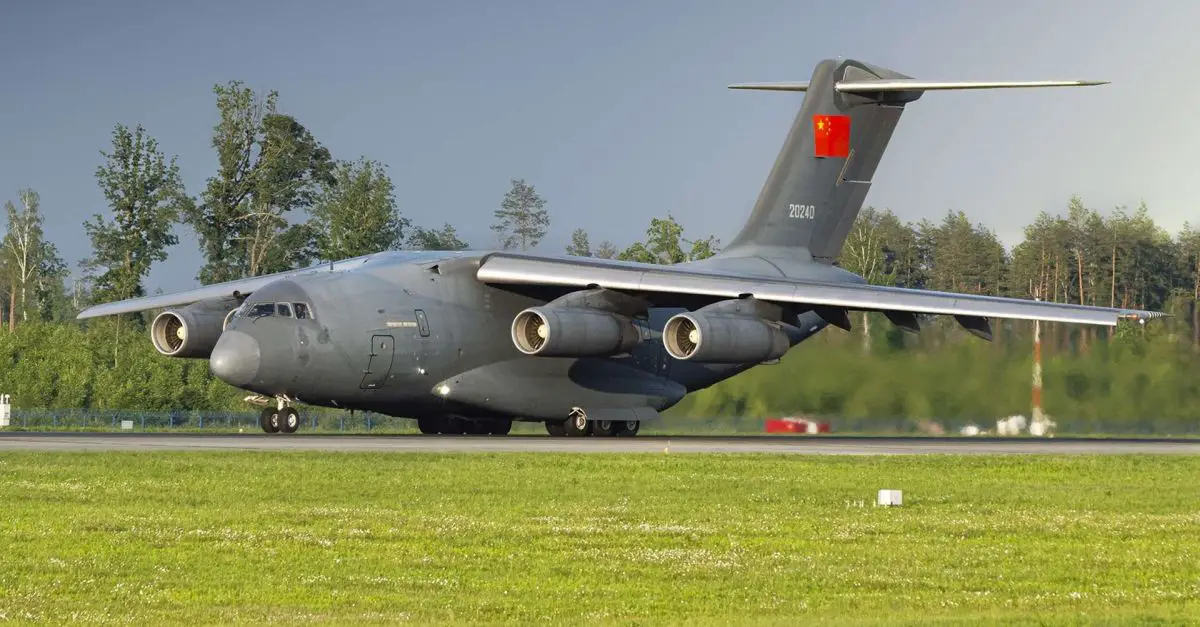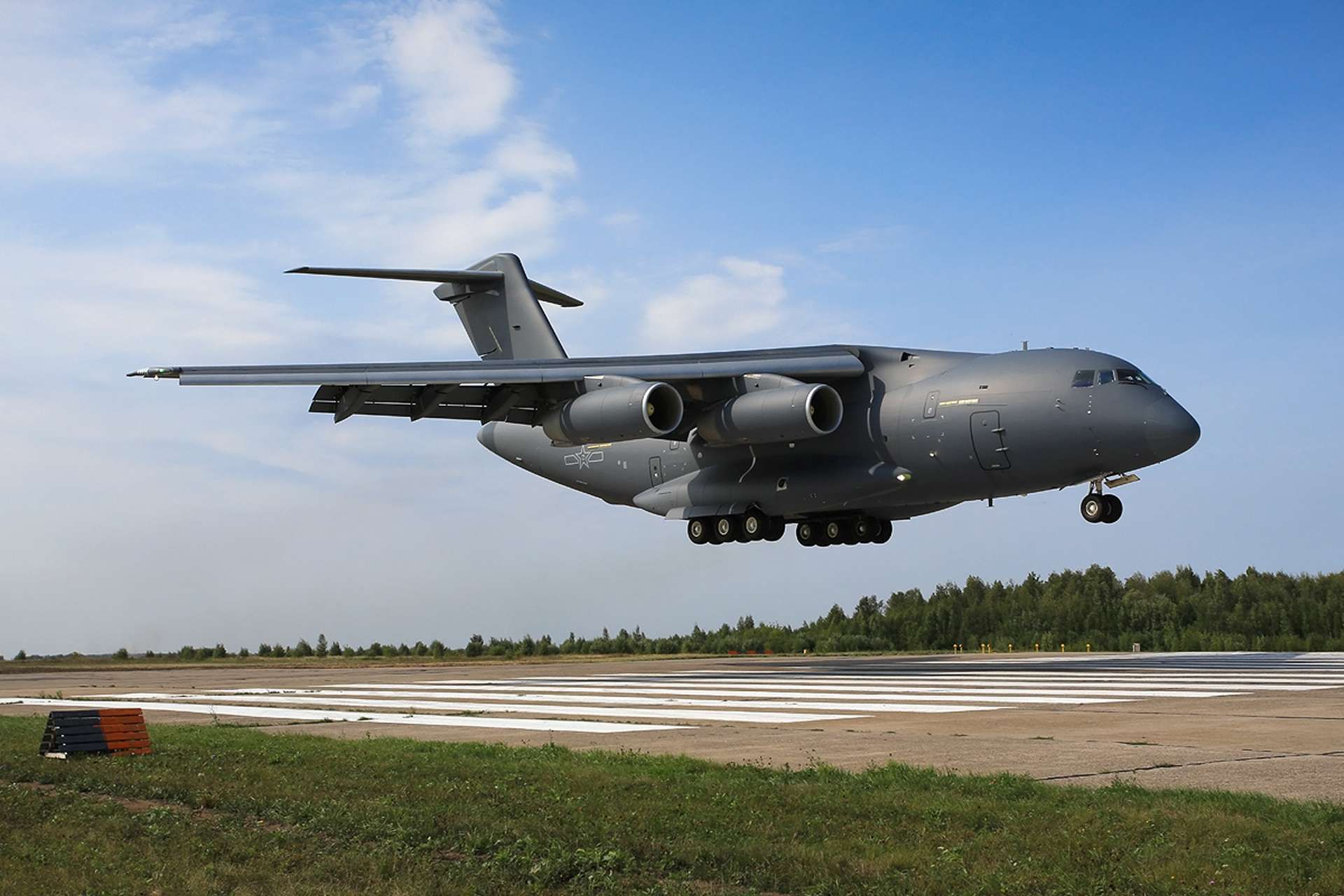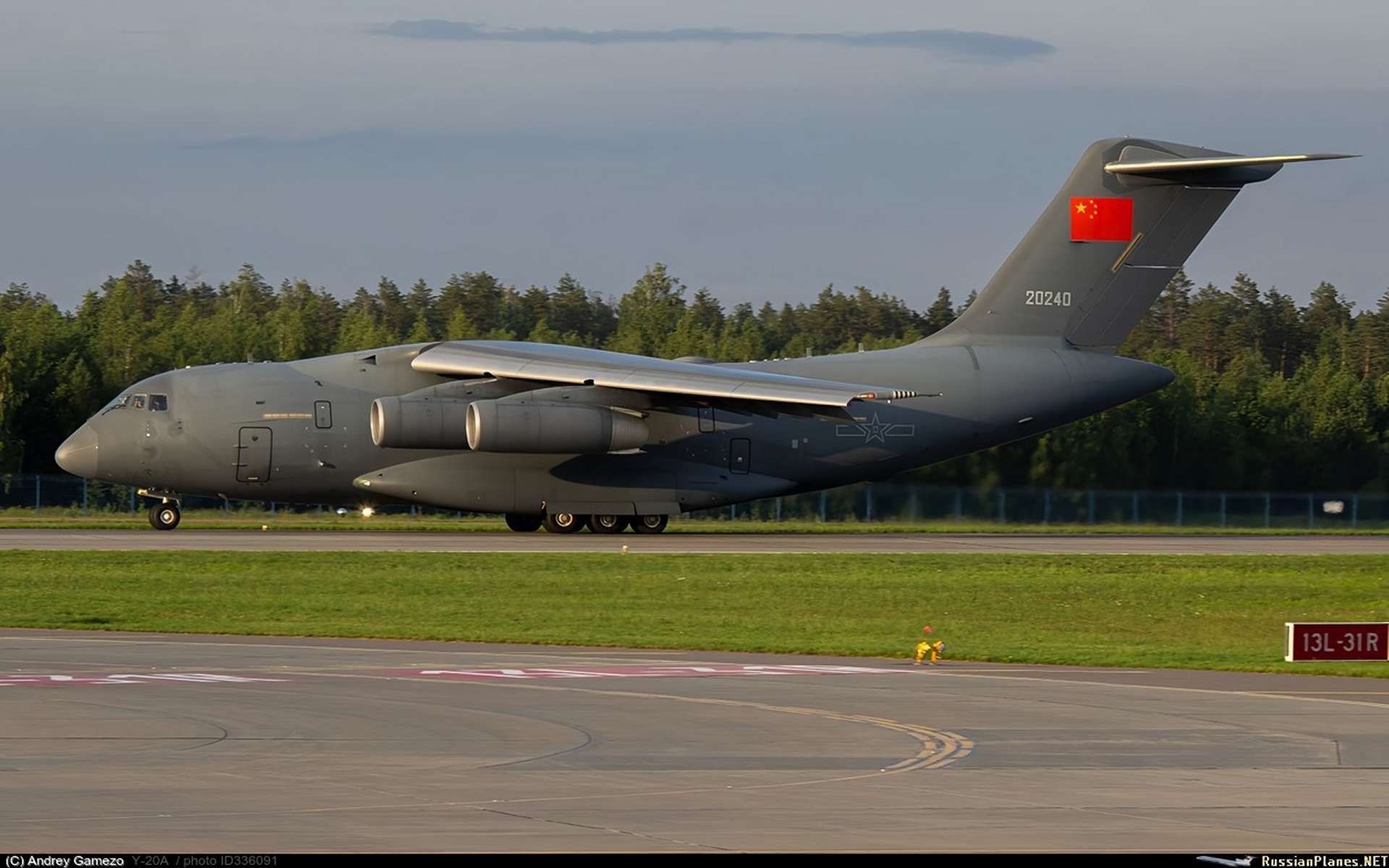Breaking News
Chinese troops arrive in Belarus on Xian Y-20A transport aircraft for parade.
On June 17, 2024, a Xian Y-20A military transport aircraft of the Chinese People's Liberation Army (PLA) Air Force was spotted at the Minsk National Airport, formerly known as Minsk-2, the main international airport in Belarus. This aircraft, with the tail number 20240, officially carried a parade crew of Chinese military personnel who were to participate in the upcoming Independence Day parade of Belarus on July 3. This event highlights the ongoing military cooperation between China and Belarus, marked by recent diplomatic engagements and cooperative initiatives.
Follow Army Recognition on Google News at this link

This aircraft, with the tail number 20240, officially carried a parade crew of Chinese military personnel who were to participate in the upcoming Independence Day parade of Belarus on July 3. (Picture source: Andrey Gamezo)
On June 25, 2024, Belarusian President Alexander Lukashenko suggested during a meeting with Chinese officials that Belarus could serve as a base for China to promote its interests in Europe, in alignment with agreements previously reached with Chinese President Xi Jinping. Lukashenko also noted the timing of the Chinese delegation's visit, which coincided with the 80th anniversary of Belarus's liberation from Nazi occupation.
The Y-20, also known as "Kunpeng," is China's first indigenous large transport aircraft, designed by the AVIC First Aircraft Design Institute in collaboration with Antonov ASTC and manufactured by AVIC Xi'an Aircraft Industry Corporation. Comparable in size and performance to Russia's Ilyushin Il-76 and the Boeing C-17 Globemaster III, the Y-20 made its first flight on January 26, 2013, and was introduced into the PLA Air Force on July 6, 2016. The aircraft operates with a crew of 3-4 and does not have in-flight refueling capability.
The development of the Y-20 originated in the 1990s when China acquired 14 Russian Il-76MD transport aircraft, providing initial strategic transport capability. However, efforts to procure additional airframes encountered difficulties in 2006, prompting China to seek assistance from Antonov ASTC to develop a new large military transport aircraft. This collaboration began in 2000, with Antonov ASTC initially promoting its An-70 military transport aircraft, which was rejected due to its limited cargo capacity, range, and unreliable engines.
China requested the new transport aircraft be powered by the reliable Russian D-30KP-2 engines, already being reverse-engineered under the WS-18 designation. Consequently, in early 2007, a Very Heavy Transport (VTL) working group was formed to develop an aircraft based on the An-77 design, essentially a jet-powered version of the An-70. The An-77 was modified to meet Chinese specifications, with an extended fuselage, increased takeoff weight, and payload capacities. Initially designated Y-XX, the aircraft was later named Y-20.

The Y-20 features a high-wing, four-engine, T-tail layout, similar to the Boeing C-17 Globemaster III, but slightly smaller. (Picture source: Russian MoD)
By 2010, the introduction of the 58-ton ZTZ99A2 main battle tank into PLA service necessitated a shift to a larger design. Antonov ASTC then based the new design on the An-170, originally developed in the late 1980s as a successor to the Il-76. The An-170's larger size and greater payload capacity of 60 tons met PLA requirements. This design led to the Y-20's first flight in January 2013 and subsequent production models delivered in 2016.
The Y-20 features a high-wing, four-engine, T-tail layout, similar to the Boeing C-17 Globemaster III, but slightly smaller. It has a maximum payload of approximately 60-65 tons and a maximum takeoff weight of 220 tons. The main landing gear consists of two six-wheel assemblies, allowing the aircraft to operate from unpaved airfields. Its shorter but bulkier fuselage is suitable for carrying heavy equipment such as main battle tanks, armored fighting vehicles, heavy artillery, and missile transporter erector launchers (TELs).
The Y-20 integrates commercial airline technology, including a glass cockpit with a heads-up display (HUD) for pilots. It can also be equipped with an electronic warfare and countermeasures suite, including jammers and flare dispensers for self-defense. Powered by four D-30KP-2 turbofans, each rated at 118 kN, the Y-20 is expected to eventually feature the more powerful WS-20 engine, currently under development, in the Y-20B variant.
During the 2016 Zhuhai Air Show, the Y-20A was showcased in a flight demonstration. The Y-20A's specifications include a length of 49 meters, a wingspan of 50 meters, and a wing surface area of 310 square meters. It stands 15 meters tall, with an empty weight of 100 tons and a maximum payload capacity ranging from 60 to 65 tons. Using four Russian D-30KP-2 engines, the Xian Y-20A can reach a maximum speed between 750 and 800 kilometers per hour, with a service ceiling of 13,000 meters and a range of 4,400 kilometers with a maximum load.

Using four Russian D-30KP-2 engines, the Xian Y-20A can reach a maximum speed between 750 and 800 kilometers per hour, with a service ceiling of 13,000 meters and a range of 4,400 kilometers with a maximum load. (Picture source: Andrey Gamezo)


























